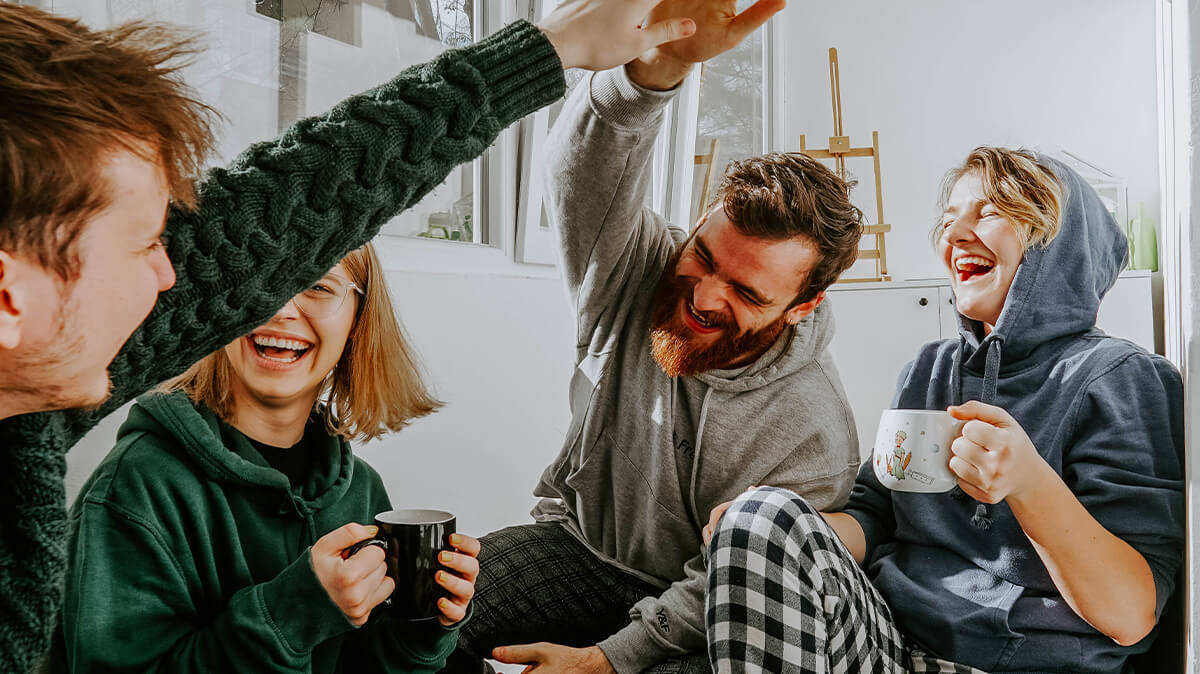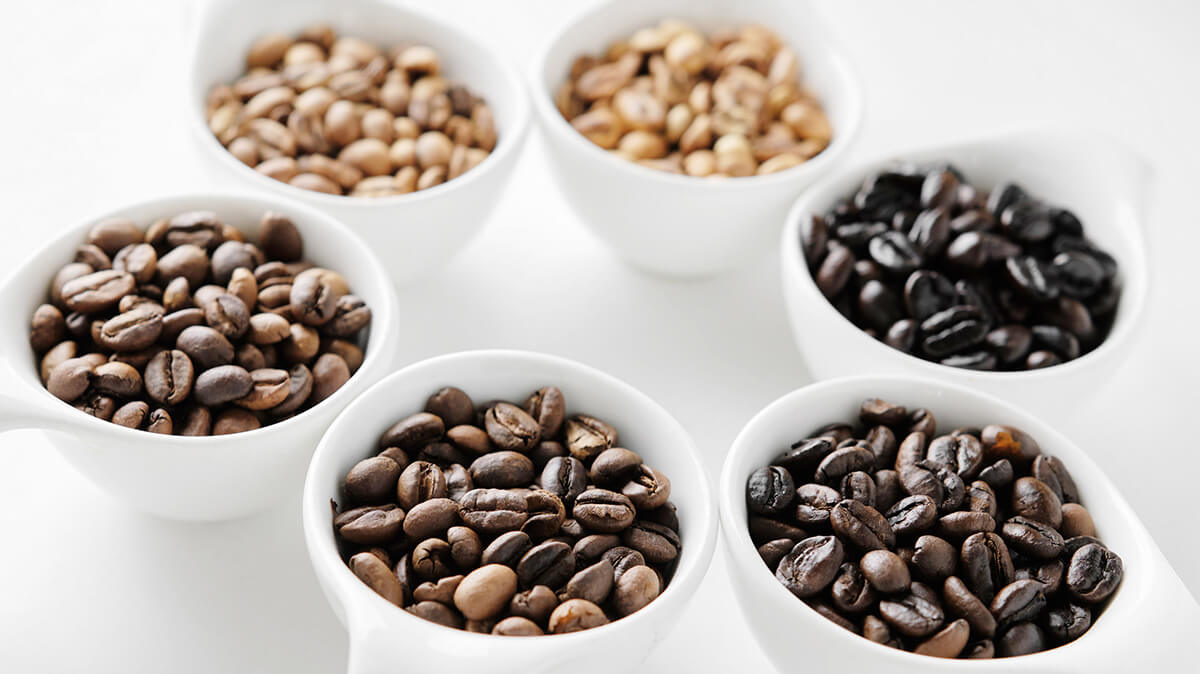Education
Caffeine 101: The Scoop on Coffee

Ever tried to have a normal conversation about coffee without mentioning caffeine? It’s like trying to talk about a sports car without mentioning how fast it goes from 0 to 60mph.
But which coffee has the most caffeine? How do you brew coffee with less caffeine? Does a dark roast really mean more caffeine than a light roast?
According to the FDA, coffee contains about 80-100mg of caffeine per 8oz cup. But that’s an estimate without nuance, and it turns out that a lot of questions on coffee’s caffeine content aren’t easy to answer.
Every step of the process, from coffee plants to roasting to brewing, can affect the caffeine content of your brew.
Ready for us to spill the beans on caffeine? Let’s get started:
Does Arabica or Robusta Coffee Have More Caffeine?
All the caffeine content in your coffee starts with the bean. Each raw coffee bean already contains its maximum amount of caffeine (bound up in salts of chlorogenic acid) just waiting to be released into free form through the roasting process.
The two main species of coffee plant that produce the world’s coffee beans are Arabica and Robusta. While Arabica coffee, with its higher sugar content and pleasing aroma, exclusively accepted in the specialty coffee scene, Robusta coffee actually contains nearly twice the caffeine in each bean.
With a caffeine content per coffee bean ranging from 1.2% to 2.4%, Robusta coffees deliver about twice the dose of caffeine per prepared cup. However, the higher caffeine content also multiplies the bitterness of Robusta coffees, making the finished product less desirable for roasting and brewing. And by less desirable, we really mean it makes your mouth sad.
Arabica (the good stuff) comes in at about a 0.9% to 1.5% caffeine content, technically making it the milder caffeine choice if we are comparing two cups that were roasted, weighed, and brewed the same.
While it does contain a lower caffeine content per bean, Arabica is preferred over Robusta for its high-quality aroma and flavor; in fact, coffee must be 100% Arabica to even be considered Specialty Grade. That’s why, as specialty roasters, our team at Driven Coffee works with only the finest quality, 100% Arabica, Specialty Grade coffee beans.
Since a higher caffeine content in the bean doesn’t mean better coffee, what other factors affect the final caffeine content in your brew? Before we get to the two main ways that you can control caffeine at home, let’s look at two elements you can consider before you buy: growth factors and roast level.
Does Growing Altitude Affect Caffeine Content in Coffee?
One of the other distinctions made in specialty coffee is the altitude at which the beans were grown. The higher the altitude, the harder the bean, and the higher the quality (which is why we offer gems like our Mexico Chiapas SHG, grown at an altitude of over 1,200 meters or 4,000ft!). But caffeine naturally occurs in smaller amounts in coffee the higher you go. Coffee grown at a higher altitude actually contains less caffeine per bean.
Fun fact: caffeine is a naturally occurring pesticide, which is one reason that high altitude coffee plants make less of it. After all, there are fewer pests the higher you go. Inversely, this also explains why Robusta plants grow much better at lower elevations than Arabica plants do. Thanks to their higher caffeine production, Robusta plants are better able to fend off the larger quantities of insects found in lower elevations.
Sunlight also affects caffeine content, with either two little or too much sun reducing the production of caffeine in each plant. Obviously, this is a difficult factor to measure, and we can’t really say with certainty in most cases whether a particular coffee lot experienced more or less sunlight in a given season. However, we think it’s important to point out sunlight’s effect because it illustrates the complex nature of caffeine content in coffee: no coffee has a set dose of caffeine despite what simple charts on the internet might suggest.

Does Dark Coffee Have More Caffeine than Light Coffee?
Dark roast vs light roast is the coffee caffeine question most people get hung up on. Traditional wisdom says that a light roast has less caffeine, while the darker you go, the more caffeine you get (i.e., darker = stronger). While this can be true in some respects, the roast level isn’t the largest factor in your cup’s caffeine concentration.
In fact, if we’re talking about caffeine concentration in each bean, conventional wisdom has the facts backwards.
Earlier in this article, we said that each bean has all of its potential caffeine inside when it is harvested. This stays true through the roasting process: no matter the roast level, each individual bean still has much of the caffeine content it started with after processing. While there seems to be some caffeine loss as the roasting process passes caffeine’s sublimation point (about 352.4 degrees Fahrenheit) and at each crack in the roasting process, the amount doesn’t vary a great deal until the roast is so dark that it creates a final product that very few people enjoy (at that point, it’s pretty much on fire). We don’t roast anything that dark; our darkest roast is our Italian Roast blend, and it definitely has plenty of caffeine kick without reaching the “don’t drink me” stage.
Why does conventional wisdom say darker is more caffeinated? Well, because the roast level does influence how porous each individual bean becomes in the process. Lightly roasted coffee beans are denser and heavier, with only a little mass roasted out of them, while dark roasted coffee beans become lighter, losing mass with temperature and roasting time.
Lighter roast, heavier bean. Darker roast, lighter bean.
At this point, caffeine content can change a lot depending on how you measure your coffee:
- If you use a scoop or spoon to measure coffee, a light roast and a dark roast will result in similar amounts of caffeine in your finished cup of coffee (for beans from the same plant, processed the same way…you get the idea). With this method, the light roast will have slightly more caffeine, but not enough to matter much.
- If you weigh your coffee on a scale (which is what we’d recommend), a dark roast will have significantly more caffeine than a light roast in your final cup (close to 30%). Why? Well, since the dark roast is lighter bean for bean, it takes more beans to make up the same weight as a measure of light roasted beans. More beans = more caffeine.
Now that you’ve gotten a good idea of what the roasting process does to your bean’s caffeine, it’s time to consider what your brew’s preparation steps might do to coffee’s caffeine potential.
Which Grind Has the Most Caffeine?
Unless you are going to eat your bag of coffee beans whole (we won’t judge, but go easy there, buddy), we need to talk about how to release coffee’s caffeine potential into an actual beverage. Whole beans must be ground before caffeine from the inside of the bean can be dissolved easily into water.
While grind size isn’t as significant a caffeine factor as volume vs weight, caffeine in your brew can be dependent on how long your grounds stay in contact with water through the extraction process. Finely ground coffee placed in a French press for four minutes will release more caffeine than the same weight in coarse grounds. Why? Because the fine grounds have more surface area coming in contact with the water than coarse grounds do.
Heat matters, too. The hotter the water, the faster the extraction process, and the quicker the caffeine makes it out of the grounds.
A very basic take on this idea looks like this:
- Hot water + long extraction time + finer grounds = more caffeine
- Cooler water + short extraction time + coarser grounds = less caffeine
But very hot water + short extraction time + fine grounds can result in a similar caffeine content as a long extraction (this, along with serving sizes, explains why you might get an even higher caffeine hit at the coffee shop than you expect; commercial espresso machines extract with higher temps than many home brewing methods). And before you decide that a cold brew method has less caffeine because of the low water temperature, remember that it has a really long extraction in comparison to other methods.
Like we said, caffeine content gets a bit complicated.
Want to know more about coffee extraction and how to get the best results? Learn how to get the most out of your brew.
How can I get less caffeine without switching to decaf?
- Use one of our light roasts
- Measure with a scale
- Grind coarse
- Brew with a French press
The size of the grounds prevents the fast release of caffeine. If you are only brewing for a few minutes before pouring out your coffee, the French press method tends to result in the least amount of caffeine for a weighted measure of roasted coffee.
How can I get the most caffeine out of my coffee?
- Pick up one of our dark roasts
- Measure with a scale
- Grind fine
- Brew with the pour over method
You could go with the Turkish or Cowboy coffee method and an ultra fine grind for just a little extra caffeine, but the final product is pretty stiff, over-extracted stuff.
The science behind caffeine is complex. While we can’t tell you exactly how much caffeine is in a single coffee bean, or how much caffeine is in a single scoop of coffee, we do hope you’ve found this guide helpful.
And if we’ve managed to convince you that measuring your coffee and controlling your grind size is important to your daily caffeine hit and the quality of your cup, be sure to check out Driven’s selection of coffee makers, brewing and coffee grinding supplies to start experimenting. Get brewing and enjoy!
More from Our Blog
The Decaf Decoded: How is Coffee Decaffeinated?
Despite the cry of some coffee aficionados that coffee without caffeine is not worth having,...
Nov
Counting Calories? Here’s What’s Really in Your Cup of Coffee.
While there is no such thing as a zero calorie cup of coffee, a cup...
Oct
Driven Coffee’s Guide to Corporate Coffee Gifts
The Perfect Boost for Clients and Employees We get it: thanks to the internet, you’ve...
Oct
Perfectly Brewed: How Many Scoops of Coffee Do You Need?
We’ve all been there. You find yourself staring at an empty coffee pot, and you’re...
Oct
Elevating Coffee Experiences: Driven Coffee Roasters Welcomes Pink House Alchemy
At Driven Coffee Roasters, we are unwavering in our commitment to delivering the very best...
Jul
French Press Recipe: A Clean and Flavorful Brew
As spring unfolds in Minnesota, we at Driven Coffee Roasters are embracing the longer days...
Apr